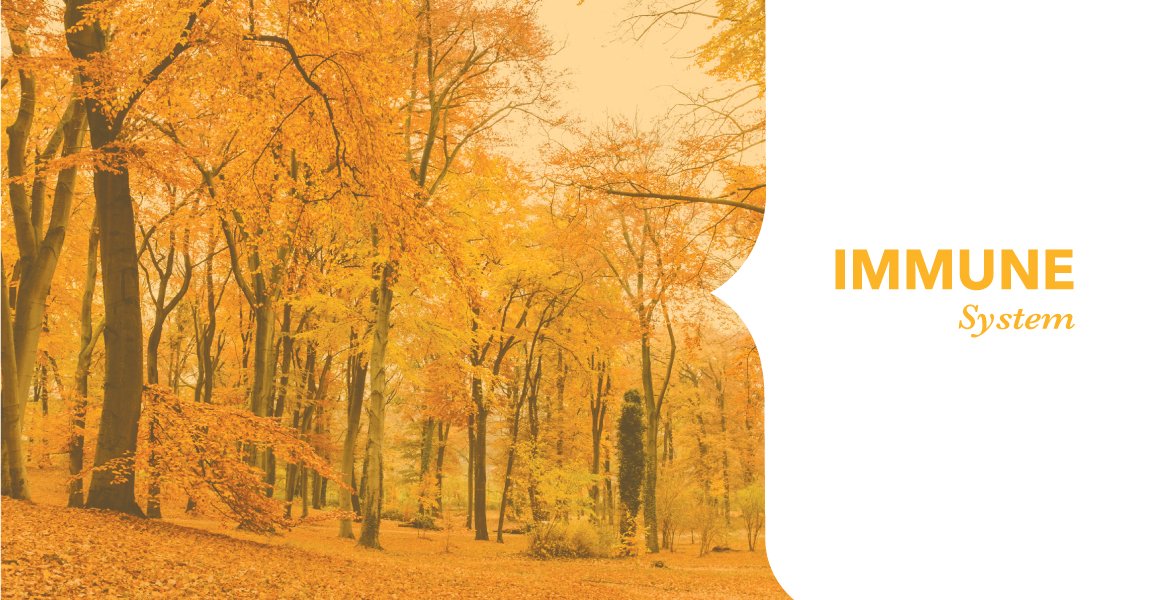Why seasons really influence our health.
Seasonal changes are a mixed bag of feelings for most. The dreaded rains of spring and the harsh clutches of winter leave most of us pining for the warmth of summer.
The spike in illnesses when the weather turns hardly goes unnoticed. Whilst they're mostly associated with heading into winter, no season is a breeze. Hay fever hits in the Spring and Summer, then you're knocked down by the common cold in Autumn, and on top of that are lingering viruses and bacteria that do the rounds in between seasons.
Everyone is at some risk; especially children, the elderly and those already suffering from pre-existing conditions.
Why the weather affects your health so dramatically.
Well, the reasons aren't that clear-cut. Currently, most scientists agree that seasonal illnesses are not directly dependent on temperature exposure, but due to other factors that occur in different seasons. For example, in winter people tend to spend more time indoors and closer to each other than they usually do in summer, providing the perfect breeding ground for pathogens (the name for tiny microorganisms that do us harm).
Additionally, while cooler/warmer temperatures do not make us ill directly, the extra stress they exert on our bodies (through trying to maintain an optimal temperature range), means there's more risk of having a weakened defence or contracting a pathogen.
But that's not the be all and end all on the topic of seasonal health. Genetics and our immune system still play an important part.
Did you know that a large proportion of our genes differ according to the time of the year? A study at the University of Cambridge found that almost a quarter of immunological genes tested (22,822) varied between summer and winter across different ethnographic and geographic regions.1 This experiment and other similar ones demonstrate that our immune system reacts to temperature, day light and other environmental factors that are still unclear.2
External stresses and how our immune system responds are the keys to limiting and preventing seasonal illness. Let's talk more about what our immune system looks like.
The Immune System 101
When it comes to health you've probably heard professionals talk about the immune system and you may even have some understanding already about how it functions. Don't worry if it's a mystery to you, we'll give you a brief overview of how our bodies deal with potential threats so you can better understand how to protect yourselves.
Our Immune System
Human beings have 12 body systems and the immune system is one of them. It is responsible for defending the body against external threats (such as allergens, bacteria, toxins, etc.) and internal threats (such as potentially cancerous cells.) There are two main branches of the immune system that work together to provide the best defence possible, the "innate" and the "adaptive" immune responses.
The First Line of Defence The Innate Response
The innate response is non-specific; meaning that although it is quite effective, it will not discriminate against specific bacteria or parasites. Therefore, it is relatively limited compared to the other response; the adaptive response.
Inflammation is one of the main innate responses. On the outside, you may only see a cut as red, swollen, warm and slightly painful. But on the inside, there is a complex system of cells and molecules at play that work to prevent any outside pathogens from entering your body and causing damage.
Long-term Memory? The Adaptive Response
As the name suggests, this part of the immune system adapts to whatever harmful matter enters the body and provides long-term defence against threats. It has a range of different cells and abilities that identify specific patterns on the surface of pathogens and builds a large, targeted response against them.
An easy to understand example comes from our experience with chicken pox. Many of us as children will contract the chicken pox virus which leads to 1-3 weeks of itchy blister-like rashes all over the body. During these weeks, the adaptive response begins to identify and mount a large defence against the virus so that if your body interacts with the virus again it can deal with the threat in a matter of days with no external symptoms.
A Closer Look
This is a very brief description of the immune system, which is incredibly complex and works in an intricate manner to deliver the best defence. To do this it requires the right nutrition and lifestyle support to function at its best. [Watch this video to learn more about the innate and adaptive immune responses.]
There's much we can do to help support our immune system on a day-to-day basis so that when microbes come our way, we're prepared.
Over the next few articles we will delve further into what specific factors can affect our immunity, the importance of nutrition on the immune system, and look at the common cold and simple steps you can take to understand and support your body for long-term gain.
References
- Dopico XC, Evangelou M, Ferreira RC, Guo H, Pekalski ML, Smyth DJ, Cooper N, Burren OS, Fulford AJ, Hennig BJ, Prentice AM. Widespread seasonal gene expression reveals annual differences in human immunity and physiology. Nature communications. 2015 May 12;6.
- Lu W, Meng QJ, Tyler NJ, Stokkan KA, Loudon AS. A circadian clock is not required in an arctic mammal. Current Biology. 2010 Mar 23;20(6):533-7.


















































